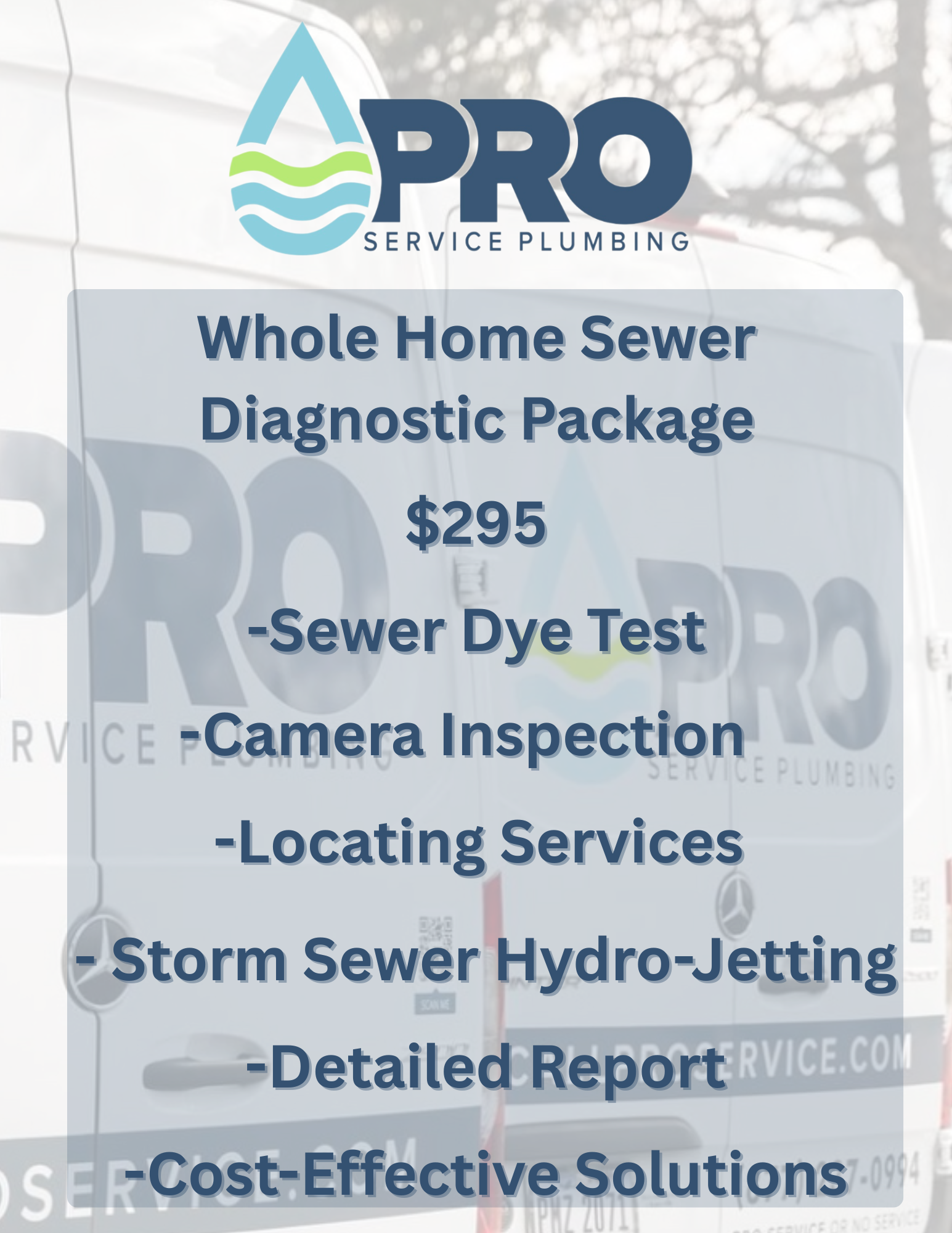Has Your Home in Rocky River, Bay Village, Westlake, or Fairview Park Failed the Sewer Dye Test?
What Is A Sewer Dye Test?
A sewer dye test is a diagnostic procedure used to identify improper connections or leaks in a property’s plumbing or drainage system—especially where stormwater might be entering the sanitary sewer system.
How It Works:
A brightly colored, non-toxic dye (often green or red) is added to water and poured into specific sources like downspouts, sump pumps, area drains, or yard basins.
A city inspector or plumber then monitors the sanitary sewer cleanout or downstream manhole to see if the dye appears.
If the dye shows up where it shouldn’t (like in the sanitary sewer), it means your property has an illegal or non-compliant connection.
Why It Matters:
In cities like Rocky River, Bay Village, Westlake, and Fairview Park, these tests are used to comply with EPA mandates to reduce inflow and infiltration (I/I)—which overload sewer systems and cause overflows into Lake Erie.
Failing a dye test may require you to:
Disconnect or reroute downspouts
Regrade your yard
Add sump pumps or dry wells
Repair broken or improperly connected pipes
What It Means When the City Says Your Sewer Lines Are Cross-Connected
What It Means:
Your property has a situation where stormwater (rain or surface runoff) that should go into the storm sewer system is instead entering the sanitary sewer, which is only meant for wastewater from toilets, sinks, showers, etc.
This is a violation of city code and often fails a sewer dye test. It’s a major issue because it overloads the sanitary system during rainstorms, leading to backups, flooding, and raw sewage being discharged untreated into places like Lake Erie.
How This Could Happen:
Old Over/Under Sewer Systems
In some Northeast Ohio neighborhoods (like parts of Rocky River), homes were built with storm and sanitary pipes in the same trench—sometimes separated only by a thin metal plate.
Over time, the divider rusts, shifts, or fails, letting stormwater leak into the sanitary line.
Improper Connections
A sump pump, downspout, or yard drain might be incorrectly tied into your home’s sanitary sewer lateral instead of the storm line.
This was common decades ago before codes changed—and it's now considered non-compliant.
Cracked or Collapsed Pipes
A damaged storm line may crack and leak into a nearby sanitary pipe, especially if they run close together or shift with soil movement.
Cross-Connections During Repairs or Renovations
Sometimes, during past plumbing work, drains were accidentally tied into the wrong system—storm into sanitary.
What to Do If Your Sewer Fails the Dye Test
Next Steps After a Failed Sewer Dye Test
If your home in Rocky River, Bay Village, Westlake, or Fairview Park has failed a sewer dye test, you're not alone. Many cities are currently overwhelmed with the volume of inspections tied to major sewer infrastructure upgrades. As a result, homeowners often receive a failure notice with no explanation of what’s wrong.
This is where working with an experienced professional matters.
At Pro Service Plumbing, we’ve helped dozens of homeowners across your area navigate this process. Our team specializes in pinpointing the exact cause of sewer dye test failures and offering cost-effective, code-compliant solutions.
Our Diagnostic Process Includes:
Cleaning debris from your downspouts and drains
Performing a full camera inspection of your sewer lines
Conducting our own controlled sewer dye test to isolate the issue
Whether it’s a storm-to-sanitary connection, broken piping, or improper drainage, we’ll find the root of the problem and help you fix it the right way — fast and affordably.
Call Pro Service Plumbing today to schedule your inspection and get clarity on your dye test failure.

